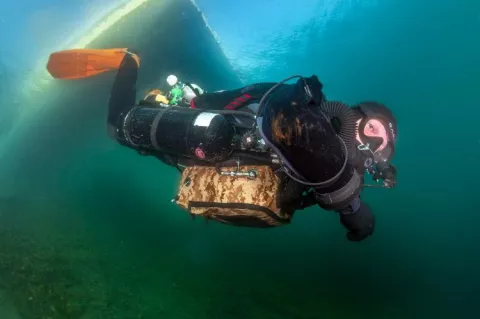Finland: 17th to 19th-Century Wrecks at Hanko
To help promote dive tourism in the Baltic Sea, the European Union’s Project Baltacar, a collaboration between Sweden, Finland and Estonia, has developed underwater heritage trails for visiting a selection of unique wreck sites in the three countries. In Finland, the project has established buoys and created dive site maps for a group of five wrecks from the 17th to the 19th centuries, located just outside Hanko. Susanne Lundvall reports.
















